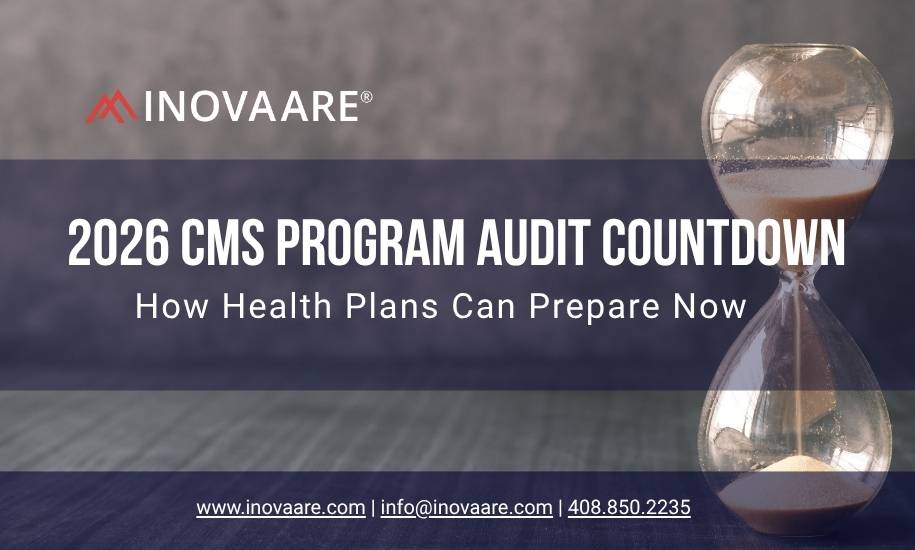The audit clock has already started
CMS Program Audits follow predictable patterns, but most health plans still treat them as a once-a-year sprint. That mindset is what causes rushed evidence gathering, inconsistent Part C & D reporting, and repeat findings. Audit season 2026 may feel far away, yet the groundwork for success must begin now.
Why waiting for audit notice could be risky
CMS expects continuous compliance, not reactive clean-ups. When audit requests arrive, health plans that rely on scattered data or manual sampling lose valuable time. Internal audits reveal the same problems year after year, missing CAP documentation, inconsistent universes, and unclear ownership.
The 2025 audit cycle has already shown a tighter CMS focus on data accuracy and timely CAP closure, which means 2026 will demand greater proof of traceability.
Step 1: Strengthen your internal audit program
Internal audits are the single best predictor of CMS audit outcomes. To prepare:
- Conduct mock audits using current CMS protocols.
- Standardize sampling across lines of business to match CMS universe requirements.
- Track findings and corrective actions inside a single system.
- Close the loop by validating CAP effectiveness within 90 days.
Pro tip: Integrate internal audit findings into enterprise dashboards so compliance, operations, and IT teams share one version of truth.
Step 2: Get your Part C & D reporting in order
CMS relies heavily on the accuracy of Part C and D universes during audits. Errors in file formats, column definitions, or source mapping trigger immediate observations. To reduce that risk:
- Automate Part C & D file generation directly from validated data sources.
- Use scrubbers that flag missing or mis-coded fields before submission.
- Cross-verify record counts and timestamps with internal audit logs.
- Establish ownership for every reporting element early in the year.
Plans that treat Part C & D as a year-round readiness activity, not a once-a-year upload, enter audits with confidence.
Step 3: Centralize evidence management
CMS requests evidence spanning multiple departments, grievances, provider disputes, claims, compliance logs, and CAP tracking. Storing these across shared drives and email folders leads to version chaos. Instead:
- Move all evidence into a secure, centralized repository.
- Link each record to its policy, control, and regulatory citation.
- Use AI-powered search tools (like Inovaare’s Usher AI) to retrieve proof within seconds.
A connected evidence library cuts prep time by weeks and improves audit defensibility.
Step 4: Automate repetitive compliance tasks
Manual audits drain resources. Health plans using automation and AI have seen up to 70% faster audit preparation and 50% fewer manual hours. Automation helps by:
- Mapping audit requests to controls automatically.
- Pre-populating CAP templates with linked evidence.
- Monitoring open issues through live dashboards.
- Generating ready-to-submit audit reports.
The key is not replacing people but empowering teams to focus on risk interpretation, not file chasing.
Step 5: Make data readiness a standing priority
Audit readiness is only possible when data is clean, traceable, and timely. Building a data-ready culture means:
- Validating source data continuously.
- Enforcing consistent data definitions across departments.
- Using reporting tools that surface anomalies early.
- Auditing data pipelines, not just outcomes.
When data is reliable, every audit process, from universe generation to CAP validation, becomes repeatable and defensible.
Step 6: Plan for year-round audit governance
Treat the CMS Program Audit not as an event but as part of daily compliance operations.
Establish:
- A quarterly internal audit cadence.
- Defined RACI ownership for audit evidence.
- Continuous CAP monitoring dashboards.
- Annual updates to policies based on CMS memos.
Embedding audit governance into daily workflows transforms compliance from a reactive burden into a proactive advantage.
The takeaway: Act like you’ve already got the audit notice.
By the time CMS sends out the audit notices for 2026, it’s already too late to fix broken processes. The plans that will pass with confidence are the ones strengthening their internal audits, automating reporting, and cleaning data today.
A strong internal audit function, automated Part C & D reporting, and centralized evidence management create the foundation for continuous compliance.
CMS Audit Readiness Checklist
Here’s a free CMS Audit Readiness Checklist, a one-page, expert-verified template covering all key readiness areas. It’s the same framework our compliance experts use to help leading health plans stay audit-ready year-round. It includes
- Internal audit checkpoints
- Part C & D file validation steps
- Evidence mapping essentials
- CAP follow-up and closure timeline
Read: What Plans Must Do To Align with the 2026 CMS Program Audit Update | Brenda Wade’s insights on the The CMS 2026 Program Audit Update
Turn audit preparation into a predictable process
Preparing for CMS audits shouldn’t feel like starting from scratch each year.
With the right tools and connected workflows, internal audits, Part C & D reporting, and CAP management can run smoothly and continuously.
Inovaare helps health plans simplify audit readiness through automation, centralized evidence tracking, and AI-driven insights, turning compliance from a reactive effort into a proactive system.
If your team is building its 2026 readiness plan, explore how our solutions can help you get there faster and with fewer surprises.
Learn more about continuous CMS audit readiness ›
